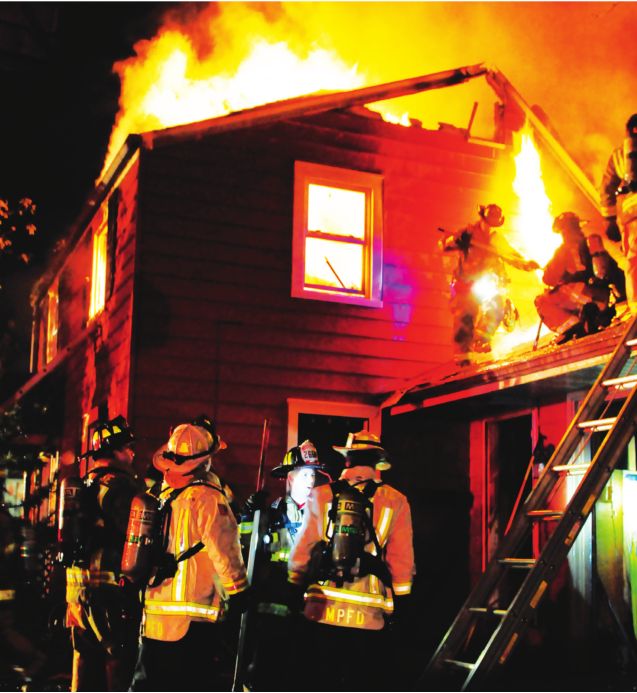Sprinkler proposal raises builders’ ire
Administrative rule would require sprinklers in all new homes
LAW | Patrick Yeagle
Illinois is considering a building code change that would mandate sprinklers in all new residences, but homebuilders worry it could hamstring the already struggling construction industry.
Illinois State Fire Marshal Larry Matkaitis has asked a panel of state legislators to adopt a national fire standard that mandates residential sprinkler systems. Meanwhile, the Home Builders Association of Illinois says Matkaitis is skirting the legislative process by routing the proposal through the panel as an administrative rule instead of through the full Illinois General Assembly as a law.
The National Fire Protection Association, a nonprofit advocacy group that comes up with building codes and other rules meant to reduce the toll of fires, is pushing the residential sprinkler proposal in all 50 states, with only limited success. Only California and Maryland have adopted sprinkler mandates, and Bill Ward, executive vice president and government affairs director for the Home Builders Association of Illinois, says 40 other states have rejected such proposals.
Maryland’s State Fire Marshal does credit residential sprinklers with helping reduce to a record low the number of deaths by fire in 2012. The Maryland fire marshal also cited a law allowing only self-extinguishing cigarettes to be sold.
Bill Ward blasts the sprinkler mandate proposal, saying that with Illinois’ construction industry operating at only about 25 to 30 percent of its pre-recession business level, the proposal is coming at “not the right time.” He said it’s more about “selling pipe and making work for special interest groups” than about safety.
Ken Wood, chief engineer for the Illinois State Fire Marshal, responded by saying the agency has no ulterior motive in requiring sprinkler systems.
“It is the mission of the OSFM to save lives and protect property through regulatory compliance,” Wood said. “The OSFM has no other vested or hidden interest in requiring sprinkler system installation.”
Residential sprinkler systems consist of a network of pipes directing water to each room of a house or apartment. At the end of each pipe is a sprinkler with a plug held in place by a liquid-filled glass element. When heat from a fire causes the enclosed liquid to expand and break the glass element, the plug falls out and releases water. NFPA says the majority of fires only activate one sprinkler, and the total volume of water used is far less than that used by a responding fire department. The organization claims residential sprinklers reduce the risk of dying in a house fire by 83 percent.
The reason sprinklers are effective, NFPA says, is because they slow a fire down and prevent what’s known as “flashover” – when a room gets so hot that everything in it suddenly bursts into flames. Flashover can occur in less than two minutes, NFPA says, but response time for fire departments can be several minutes longer.
Opponents and advocates of residential sprinkler systems can’t agree on how much they cost. Ward claims a cost of between $7,000 and $17,000, while a fact sheet produced by the Illinois State Fire Marshal claims a cost of $1.61 per square foot, or about $3,220 for a 2,000-square-foot home.
“We think this is a very reasonable cost for a lot of safety,” Wood said.
Regardless, Ward at the builders’ association worries that the extra cost will dissuade consumers from building new houses.
“It should be the homeowner’s choice whether they put this in their home or not,” he said.
Ward says Matkaitis should have put the proposal before the entire General Assembly instead of the 12-member Joint Committee on Administrative Rules. Unlike normal legislation, proposals before JCAR require eight “no” votes to be defeated, Ward says, instead of requiring a majority “yes” vote for passage.
“It’s a major state policy that should have transparency, with affirmation or denial by all state legislators, not just 12,” Ward said. “He’s taking the line of least resistance.”
Wood dismissed that notion. “The fire prevention and safety code adopted by the OSFM has always been found in Illinois Administrative Code and not statute,” he said. “We have been adopting fire codes this way since 1909.”
Contact Patrick Yeagle at [email protected].
Video of fire with and without sprinklers: http://www.youtube.com/watch?v=0pFB_ N79DiM